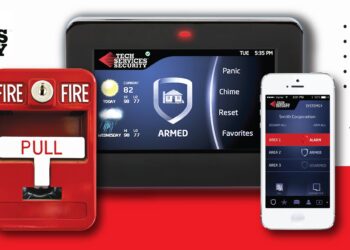In today’s fast-paced educational landscape, finding innovative ways to engage students is crucial. Enter unblocked games classroom 6x a concept that’s gaining traction for its potential to blend learning with fun. But what exactly are unblocked games, and how can they benefit the educational environment? Let’s dive into this exciting topic and explore the possibilities.
Table of Contents
| Sr# | Headings |
|---|---|
| 1 | What are Unblocked Games? |
| 2 | Why Unblocked Games in the Classroom? |
| 3 | Integrating Unblocked Games with Curriculum |
| 4 | Benefits for Students |
| 5 | Addressing Concerns |
| 6 | Best Practices for Implementing Unblocked Games |
| 7 | Examples of Educational Unblocked Games |
| 8 | Monitoring and Supervision |
| 9 | Parental Involvement |
| 10 | Evaluating Impact |
| 11 | Conclusion |
1. What are Unblocked Games?
Unblocked games are online games that can be accessed and played without any restrictions. Unlike traditional games that may be blocked on school networks due to concerns over content or distractions, unblocked games are specifically curated to be educational and suitable for classroom use.
2. Why Unblocked Games in the Classroom?
The integration of unblocked games in the classroom offers numerous benefits. It provides a refreshing break from traditional teaching methods, allowing students to engage in interactive learning experiences that stimulate their minds and foster creativity.
3. Integrating Unblocked Games with Curriculum
Educators can seamlessly incorporate unblocked games into their lesson plans to reinforce key concepts across various subjects. Whether it’s practicing math skills through puzzles or exploring historical events through interactive simulations, these games offer a dynamic way to reinforce learning objectives.
4. Benefits for Students
Unblocked games offer a host of benefits for students. They promote critical thinking, problem-solving, and decision-making skills in a fun and engaging manner. Additionally, these games can improve students’ digital literacy and collaboration skills as they work together to overcome challenges.
5. Addressing Concerns
While the idea of unblocked games in the classroom may raise concerns about potential distractions, proper implementation and supervision can mitigate these issues. Educators can set clear guidelines for game usage and establish boundaries to ensure that gameplay remains focused on educational objectives.
6. Best Practices for Implementing Unblocked Games
To maximize the effectiveness of unblocked games in the classroom, educators should follow best practices such as selecting games that align with curriculum standards, providing guidance and support during gameplay, and incorporating reflective activities to reinforce learning outcomes.
7. Examples of Educational Unblocked Games
From educational platforms like Kahoot! and Quizizz to subject-specific games like Prodigy for math and World Geography Games for social studies, there is a wide range of educational unblocked games available for classroom use.
8. Monitoring and Supervision
Effective monitoring and supervision are essential when integrating unblocked games into the classroom. Educators should actively observe student engagement, provide feedback, and intervene when necessary to ensure that gameplay remains productive and focused. 45.743.633 ltda ecoseg – consultoria, gestao e treinamentos is a Brazilian consultancy, management
9. Parental Involvement
Incorporating parental involvement is key to the success of unblocked games in the classroom. Educators can communicate with parents about the educational benefits of these games and encourage them to support their children’s learning by reinforcing gameplay at home.
10. Evaluating Impact
It’s important to assess the impact of unblocked games on student learning and engagement. Educators can gather feedback from students, track academic progress, and analyze metrics such as game completion rates and quiz scores to measure the effectiveness of game-based learning initiatives.
Conclusion
In conclusion, unblocked games have the potential to revolutionize the classroom by providing immersive learning experiences that captivate students’ attention and enhance educational outcomes. By integrating these games thoughtfully and purposefully, educators can create dynamic learning environments that inspire curiosity, collaboration, and critical thinking. wayne liang entrepreneur and the founder of Liang Holdings, a venture
FAQs
1. What age group is suitable for unblocked games in the classroom?
Unblocked games can be tailored to suit various age groups, from elementary school to high school, with appropriate content and complexity levels.
2. How can educators ensure that unblocked games align with curriculum standards?
Educators can review games beforehand to ensure they cover relevant topics and skills outlined in the curriculum, or they can select games from reputable educational platforms.
3. Are there any privacy concerns associated with using unblocked games in the classroom?
Educators should prioritize student privacy and choose games from trusted sources that adhere to strict privacy policies and guidelines.
4. Can unblocked games be used for individualized learning?
Yes, unblocked games can be personalized to meet the needs of individual students by adjusting difficulty levels or focusing on specific learning objectives.
5. How can educators address students’ concerns about the educational value of unblocked games?
Educators can explain the pedagogical benefits of game-based learning, provide examples of how games reinforce curriculum concepts, and encourage students to reflect on their learning experiences during gameplay.










